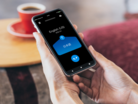How healthcare medical devices overcome language barriers

Evidence shows that hospitals and other healthcare providers face a growing challenge to meet the changing communication needs of increasingly diverse populations.
Language barriers can prevent patients from engaging in seamless conversations with the healthcare professionals treating them.
This can result in miscommunication, which could potentially be life-threatening, as meaningful conversations with patients and the speed of communication are crucial in healthcare environments.
Joe Miller, Pocketalk general manager of the Americas and Europe, wants to help healthcare professionals and patients communicate more effectively. He spoke to Healthcare Digital about how Pocketalk’s medical devices work to prevent language barriers.
Joe Miller, Pocketalk general manager of the Americas and Europe
Communication barriers in healthcare hinder professionals and patients
"Pocketalk conducted research with 1,000 healthcare workers from across the UK in October 2021. It found that a fifth of those surveyed said they have faced language barriers when communicating with patients and colleagues, as often as every day.
"During a typical working week, as much as four and a half hours are spent by nurses, doctors and other healthcare professionals managing communication breakdowns, born from language barriers.
"Language barriers can result in miscommunication that impacts a patient’s understanding of their condition or treatment – this can be potentially life-changing or even life-threatening.
"Therefore, it’s crucial for all healthcare providers to now think carefully about how they can remove language barriers, to help patients who speak an additional language.
"Also, numerous studies conducted over the past 30 years show that a clinician’s ability to explain, listen and empathise can have a huge impact on patient health outcomes as well as patient satisfaction.
"Cultural beliefs also need to be considered when overcoming language barriers and clinicians may often see patients relying on their family members and friends to act as interpreters. However, this can present several problems.
"Those asked to step in as impromptu interpreters may lack appropriate language skills, knowledge of medical terminology, or fail to translate complex information correctly. Their actions could also present serious issues around patient confidentiality."
Improving healthcare outcomes for patients with medical devices
"For time-poor clinicians who are already working in challenging conditions due to the growing pressures on healthcare providers, relying on interpreters also requires spending time organising and overseeing the process.
"But the right technology can make a huge difference. Whilst many healthcare providers already use over-the phone translation services to get help from an interpreter, access to tools such as digital translation devices or apps.
"These GDPR and HIPPA compliant solutions facilitate direct communication between healthcare workers and patients which helps foster relationships as well as provide a quicker more affordable option.
"For example, Lancashire and South Cumbria NHS Foundation Trust is one of the UK healthcare providers using Pocketalk real-time language translation devices, to overcome language barriers.
"The trust received three free devices donated by Pocketalk to UK healthcare providers during the early stage of the pandemic to offer clinicians quick and accurate help to speak with patients.
"Having clinicians who are bilingual is also increasingly helpful for healthcare providers. They can help translate important information to patients and help their organisation communicate in a way that takes cultural differences into account.
"Other ways of overcoming communication barriers include encouraging clinicians to be more visual and make full use of visual prompts.
"Patients are more likely to remember and understand information much better with clear visual prompts like diagrams, images and models.
"Ultimately, healthcare providers need to use a combination of the right people and translation technology and tools to remove communication barriers and improve clinical outcomes for patients who speak multiple languages."
- UNEP: Tackling Climate Change to Decrease Health Issue LoadSustainability
- Vaccines, Dementia & Food: The Week's Top Healthcare StoriesMedical Devices & Pharma
- The Toxic, Food-Borne Chemicals Costing Healthcare TrillionsHospitals
- How Amgen Combines Life-Saving Biotech & SustainabilitySustainability




